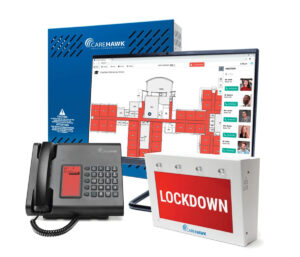By: Chris Wilhelm
In 1871, the Great Chicago Fire caused the destruction of nearly 3.3 square miles of the metropolitan Chicago area, the loss of 100,000+ resident homes, and the deaths of over 300 people. In commemoration of this devastating event, National Fire Prevention Week was established to act as an annual reminder of the importance of fire safety education and awareness.
Thankfully, we’ve come a long way since 1871. Our fire departments have massive fire trucks replacing horse-drawn steam engines and emergency responder teams are highly trained and equipped with state-of-the-art gear to battle intense heat, flames, and prevent smoke inhalation. In the event of a fire, we have a solid infrastructure in place to quickly and more efficiently react. This week, however, emphasizes that the best way to reduce the risk of loss of life and property by taking the right steps to avoid a fire in the first place.
Fire safety and prevention is much more than installing smoke detectors and having a portable fire extinguisher present. Technology has brought about significant advancements in many areas, and fire detection is no different. From systems that require multi-factor confirmation (heat and smoke) to prevent false alarms to proactively designed systems using constant air sampling methods, the primary focus is the prevention and the early detection of fires.
Organizations such as the NFPA (National Fire Protection Association), IBC (International Building Code), IFC (International Fire Code), and testing agencies such as the UL (Underwriter’s Laboratory) have established stringent codes and regulations that are constantly being re-evaluated in the wake of these advancing systems and in light of the changing materials used during construction.
We’ve discussed the effects of lightweight construction and synthetic materials before but it’s well worth mentioning again. Through research conducted by UL, structures that are built with lightweight materials reach the point of catastrophic structural failure in as little as six minutes. These fires not only burn more quickly; they also burn significantly hotter and carry a noxious, sometimes toxic smoke as a result of the synthetic material.
Six minutes.
We cannot stress enough the importance of having a working and compliant fire safety system. During this week/month, we challenge you to look at your fire safety plan and technology. When is the last time you had an inspection? Code requires one is performed annually, but have you abided by that? Do your employees know their emergency procedure? Could you be using some of the advanced technology mentioned previously to alert your staff of danger sooner?
If you have any questions about your current system or need to schedule a maintenance check. Don’t hesitate and contact us today! Our certified technicians can evaluate your current systems for potential failures before something happens.



